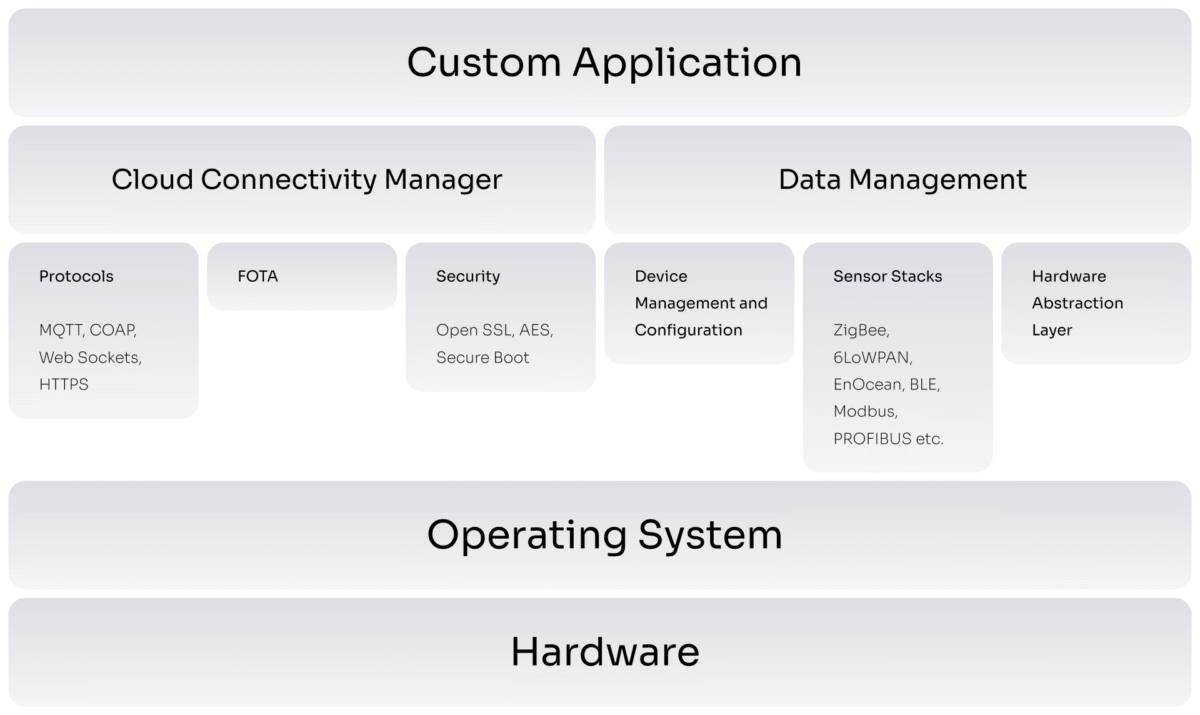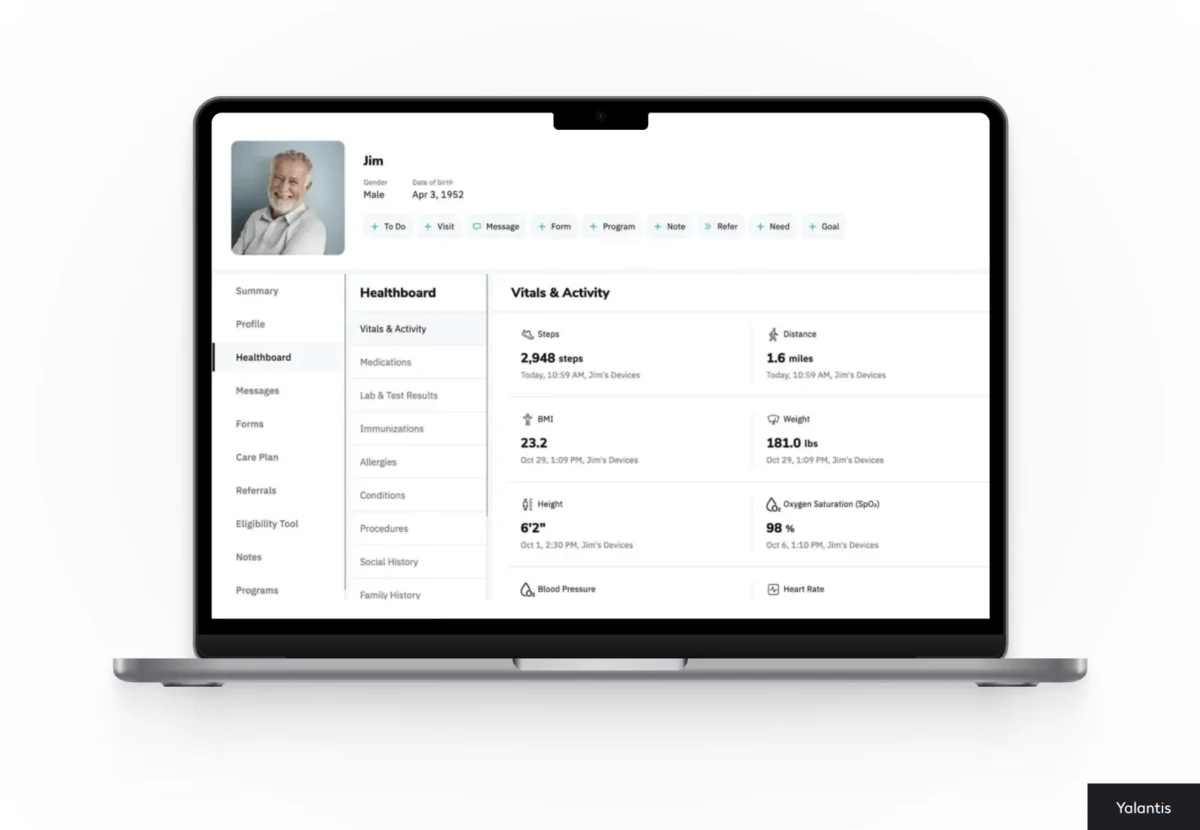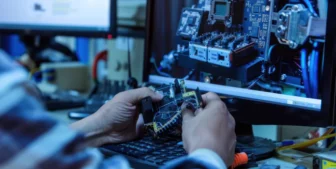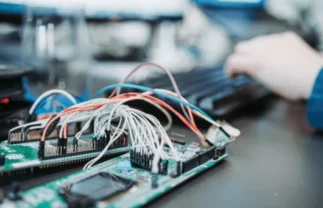
Building Firmware for Embedded IoT Devices: 2025 Best Practices
Summarize:
Device lags, failures, and security issues shouldn’t hold you back. Explore the 6 best practices for building reliable, secure, and efficient firmware for embedded IoT devices.
Ever faced frustrating delays, unexpected device failures, or late-night security patch emergencies? Chances are, these problems started with poor firmware development for embedded IoT devices. Just think: in 2024, ONEKEY found out that outdated firmware is one of the most common ways hackers break into IoT systems.
Now, as IoT hardware becomes more connected (and more exposed), firmware goes beyond the mere “software for hardware.” It’s your first line of defense and the engine behind your product’s performance.
So, how do you build it right? Read on to find:
- main firmware architecture decisions in 2025
- best practices for building secure, reliable firmware
- tips for firmware optimization for battery-powered devices
And it won’t be just theory. As an IoT solutions provider, we’ve worked on firmware for smart fleet management, EV charging stations, and wearable tech integrations. Let’s explore what actually works — and how you can apply it to your IoT project.
Highlights:
- make sure your services for IoT firmware deliver these critical components: bootloader, OS, device drivers, and app logic
- mind that developing great firmware demands a lot: software and hardware co-design, modular architecture, power efficiency optimization, secure boot and encryption, resource constraints consideration, along with testing and simulation.
- beware of the following cyber threats: firmware tampering, update attacks, and hidden vulnerabilities
What Firmware Means for Embedded Devices
Firmware is the low-level code embedded into your IoT device’s hardware. It’s precisely what makes your device perform functions it has been created for — whether it’s turning on sensors, sending data, or connecting to networks. Simply put, firmware controls how the hardware behaves.
Speaking of firmware components, custom firmware development services would typically include the following:
- Bootloader. It’s the very first code that runs when your device turns on. It starts the device, checks for updates, verifies the firmware’s integrity, and hands control to the operating system or app.
- Operating system (OS). Many IoT devices, especially complex ones, use a real-time operating system (RTOS) — FreeRTOS or Zephyr are notable examples. An RTOS manages tasks, memory, and schedules processes. Simpler devices, in turn, rely on “bare metal” programs, where the code directly controls the hardware without a formal OS.
- Drivers. Every device’s hardware component — such as a Wi-Fi module, a temperature sensor, or a motor controller — needs specific instructions to work. Device drivers are, in fact, those instructions. Besides that, they hide all the complex, low-level hardware details, so developers don’t have to deal with registers, memory addresses, and hardware-specific protocols and use simple function calls instead.
- App logic. This is the custom code that defines what your device actually does and how it delivers business value. It may include anything from sending GPS coordinates to collecting data.

Why Firmware Matters
As you now know, firmware is responsible for everything your device does. If it’s slow or insecure, your whole product suffers.
- Device performance. Poor IoT firmware development can lead to slow, buggy, or malfunctioning devices.
- Power consumption. Well-optimized firmware makes the difference between days, months, and even years of battery life, especially for battery-powered devices.
- Scalability. When the number of devices in your ecosystem grows, proper IoT firmware development makes scaling, updates, and maintenance more manageable.
- Security. Poorly protected or legacy firmware is a hacker’s favorite target — and potential damage to your reputation and bottom line. And with the average cost of a data breach hitting $4.9M in 2024, these risks aren’t theoretical.
Firmware vs. Software
People tend to mix up IoT firmware and software, but these have different roles in IoT:
- Firmware. Controls the device’s hardware. It’s an embedded layer that manages the device’s functions.
- Software. Handles user interactions and data processing. It’s a set of instructions running on external systems or user interfaces that allows for control over IoT devices.
Embedded Firmware Development Best Practices in 2025
So, how to build firmware for IoT devices that actually offers decent device performance, power consumption, scalability, and security? Here are the main practices we follow — and recommend:
Hardware-Software Co-Design
Good firmware starts with good hardware choices. But you can only achieve the best results when your hardware and software teams work together from the start.
For example, in our IoT-based fleet management project, we didn’t develop custom firmware for someone else’s hardware. Instead, our business analysts worked with engineers to design a prototype device around specific business needs.
For the hardware components part, we selected sensors to track:
- geolocation
- tire pressure
- speed
- motion and vibration
- motor temperature
- and beyond
On the software side, we used a microservice architecture. That way, if we wanted to update just the geolocation feature or add a new device later, we wouldn’t have to change the entire system.
Takeaway: Plan hardware and software together, not separately.
Modular Architecture for Hardware Abstraction and Flexibility
Modular architecture lets you separate hardware, firmware, and software layers. Here’s how: you design everything in self-contained modules (such as Bluetooth and sensor interfaces in the firmware’s case). This approach is beneficial because it allows you to:
- maintain and update your system more easily without risking the whole thing
- change hardware components and peripherals without rewriting your entire firmware
This kind of architecture is a must for medical device IoT development, automotive applications, industrial IoT solutions and services, and other heavy-regulated industries. Why? Because you need convenient means to make sure your product evolves safely and efficiently over time.
Power Efficiency Optimization
For those devices that are battery-powered or in remote locations, power efficiency is a number one requirement. Poor firmware design = dead devices when you need them most.
Power optimization techniques you can use:
- duty cycling, meaning the firmware turns sensors on/off intelligently
- sleep or low-power modes for components or the entire microcontroller when not actively in use
- event-driven architecture, meaning the firmware “wakes up” only when a specific event happens
For instance, in our EV charging project, we applied demand response and load management to optimize when and how energy was consumed. This allowed our client to both save costs and promote sustainability.
Secure Boot and Encryption
With flawed or outdated firmware being a top vulnerability, IoT firmware security is not optional. Recent examples say it all:
- flaws in Bosch thermostats could be used by attackers to implant rogue firmware
- Siemens SIMATIC PLCs could be exposed to silent firmware installation attacks
- vulnerabilities in the UEFI code could let hackers bypass secure boot entirely
Sounds discouraging? But that’s the reality of not implementing encryption and secure boot processes.
Secure boot makes sure that only verified firmware runs on your device. When paired with end-to-end encryption for data in transit and at rest, you get a much stronger defense against attacks.
Efficient Task and Memory Management
Most devices work with tight memory constraints and often require deterministic, real-time responses. Because of that, they need lightweight real-time operating systems. Such OSs help:
- schedule tasks with strict timing requirements
- handle sensor input/output efficiently
- minimize RAM and flash usage on tiny microcontrollers
For optimized memory use, your embedded software engineering services must include optimizing code size and choosing memory-efficient data structures.
Testing and Simulation
Here’s the scary part: Less than a third (31%) of companies surveyed by ONEKEY conduct regular security tests on embedded firmware. Even worse? 22% don’t even know if they test at all.
Skipping testing is reckless. We recommend:
- using simulation environments for testing hardware behavior before field tests
- unit testing for every firmware module
- code analysis to identify vulnerabilities early
- penetration testing of firmware updates
In-House Development vs. Firmware Consulting Services
Before handling IoT firmware development for embedded IoT devices, you may be puzzled. What’s better: building in-house or bringing in external experts?
The answer? It depends — but here’s how to think it through.
When In-House Makes Sense
If your team already has:
- engineers with embedded systems experience
- an expertise in RTOS, hardware drivers, and security layers
- time and resources to run thorough testing cycles
- long-term plans to maintain the firmware internally
Then, developing firmware solutions in-house could be a great move, especially if you want total control over the technology stack.
When to Bring in IoT Firmware Consultants
For many companies, though, in-house isn’t always the most practical way, especially if:
- your internal embedded talent is limited or unavailable
- you’re entering new technical territory like OTA infrastructure or RTOS
- security is a priority and you need embedded firmware consulting to ensure compliance
- you’re dealing with tight deadlines and can’t afford trial and error
Plus, firmware mistakes are expensive to fix later. Consulting with experts right away can save you months of debugging.
Not sure how to build secure, scalable firmware solutions?
Get custom IoT consultingFirmware Security Challenges and How to Address Them
Only one in three IoT teams surveyed by Memfault believes their company properly tests the cybersecurity of its products. If entire products don’t get enough attention, what does that say about firmware — the part most users never even see?
Building secure firmware for embedded systems is no small task. Why? Being one of the top targets for attackers, poorly developed firmware may expose your entire device to tampering, data theft, or even complete takeover by malicious actors.
The Biggest Threats to Firmware Security
Here are the key threats to watch out for:
- Firmware tampering. It’s when attackers try to modify or replace your firmware with a malicious version.
- Update attacks. These happen during the OTA update process. Hackers either intercept it and install fake updates or handle the rollback procedure, reverting your device to an older firmware version that has known vulnerabilities.
- Insecure dev practices. These include using outdated libraries or programming languages for firmware development. The result is often bugs and security holes. That’s why more teams choose Rust, which prevents common flaws like buffer overflows.
- Vulnerabilities. These can include anything from coding errors and poorly set up permissions to weak passwords or open debug ports. All of this creates entry points for attackers to hijack devices and steal your data.
How to Protect from These Attacks
The good news? The above threats are manageable. You can protect your firmware with:
- Secure boot. This makes sure that only trusted, verified firmware can work on the device.
- Signed firmware updates. This implies that every update should be digitally signed by your company. Then, your device’s firmware checks this signature before accepting any new code.
- Rollback protection. This doesn’t let attackers downgrade the firmware to an older, vulnerable version.
And to strengthen your security practices even further, you can simply follow existing industry standards. NIST and TCG guidelines are just two examples.
Firmware Optimization for Resource-Constrained Devices
Let’s reiterate this: when you’re working on devices that need to run on tiny batteries or limited hardware, IoT firmware optimization is a must. Here’s how to do it right:
Lightweight Firmware Code Makes a Big Difference
The first rule? Keep it lean. Overly complicated IoT firmware wastes both processing power and energy — leading to shorter battery life and slower response times. So, remove unused libraries or features, avoid unnecessary CPU cycles, and allocate memory only when absolutely necessary. Leveraging professional Rust development services can further enhance firmware efficiency and reliability, providing memory-safe and high-performance solutions for embedded IoT devices.
Sleep Mode Is More Than Turning Your Device Off
Deep sleep is great. But there are better strategies to help you balance performance and energy use. For example:
- partial sleep modes that keep essential components on but power down everything else
- event-driven wakeups, where devices only fully wake when a sensor triggers or a meaningful threshold is hit
- dynamic adjustment of sleep cycles depending on usage patterns or environmental conditions
Smarter Communication Saves Power
Data transmission is one of the most power-consuming tasks for devices. To tackle that, develop IoT firmware using lightweight communication protocols like MQTT or CoAP, instead of heavy HTTP requests.
How Yalantis Helps Companies Build Better Firmware
Our embedded IoT firmware development services cover everything you may think of:
- architecture design
- Rust-based firmware development
- RTOS development
- device drivers development
- firmware encryption and secure boot
- cloud systems and mobile app integration
- OTA updates
Here’s how these very end-to-end embedded firmware development services impact real-world products:
Smarter Fleet Management
For one of our clients in the fleet management space, we built a connected IoT solution. It completely changed how they work, helping them achieve:
- 1.5X faster order delivery
- around 40% reduction in operating costs
- 50% increase in operational efficiency
From picking the right on-vehicle sensors to the backend analytics, the Yalantis team was responsible for the entire development process of the IoT remote management system.
Sustainable EV Charging
In another project, we refined an EV charging solution to meet the demand for energy-efficient, environmentally friendly tech. In particular, we:
- reduced environmental impact by optimizing when and how vehicles charged
- improved grid stability through demand response and load management mechanisms
- optimized energy use both for customers and energy providers
Simple Wearable Integrations in Healthfully
When working on the remote patient monitoring system, Healthfully, we had to integrate the patient-facing app with Apple Watch, Fitbit, Withings, Google Fit, and iHealth. The result? The integrations encouraged patients to engage more actively with their health data.

“Good firmware makes your device work. Great firmware creates real, measurable business results.”
Conclusion
Develop IoT firmware like it matters — because it does. Quality firmware makes your devices truly performant, secure, and scalable, while a poorly developed one leaves you with breakdowns, drained batteries, and vulnerabilities.
Leverage our six embedded firmware development best practices for 2025 to create firmware that gives you a winning edge:
- remember about hardware and software co-design
- implement modular architecture for OTA and feature updates
- optimize power usage
- enable secure boot and encryption
- keep RTOS and memory constraints in mind
- never skip testing and simulation
No matter how great your IoT idea is — whether it’s medical device software development services, consumer electronics, or industrial automation — you need a solid firmware strategy behind it to succeed.
Ready to build smarter firmware?
Get started with usFAQ
What makes embedded firmware consulting valuable for IoT device projects?
Choosing firmware consulting services means bringing in external expertise you may lack in-house. It’s a way to speed up the development process, avoid common security and compliance pitfalls, and implement tricky firmware-specific tech with ease.
When is in-house IoT firmware development better than outsourcing?
Generally, it works if you already have an embedded systems team on board. Speaking in greater detail, it’s great if you have a long-term plan to maintain and update your hardware devices and the IoT product is core to your business.
What risks do insecure firmware pose to IoT devices?
Insecure firmware is an open door for attackers. Not having your firmware protected and up-to-date may result in tampering, interception of updates, and exploitation of vulnerabilities. The consequences? Lost trust, costly fixes, and in some cases, real-world harm if critical systems are affected.
How to evaluate IoT firmware development services for embedded systems?
First, seek proven experience in your industry and with the specific hardware type. Next, look for custom firmware development expertise. You may also want to check if your potential partner has established processes and tools for security, testing, and updates.
Rate this article
5/5.0
based on 15 reviews




